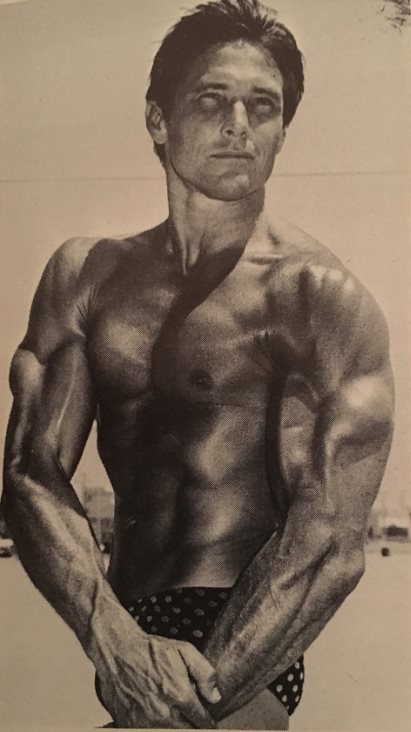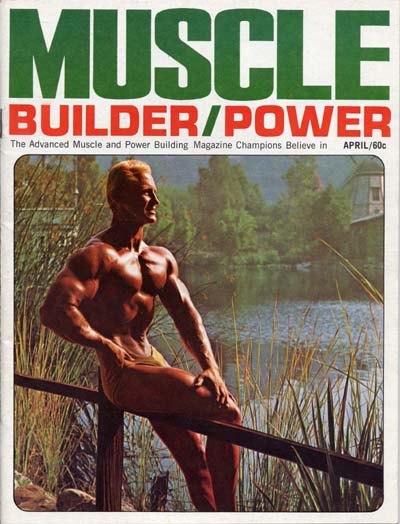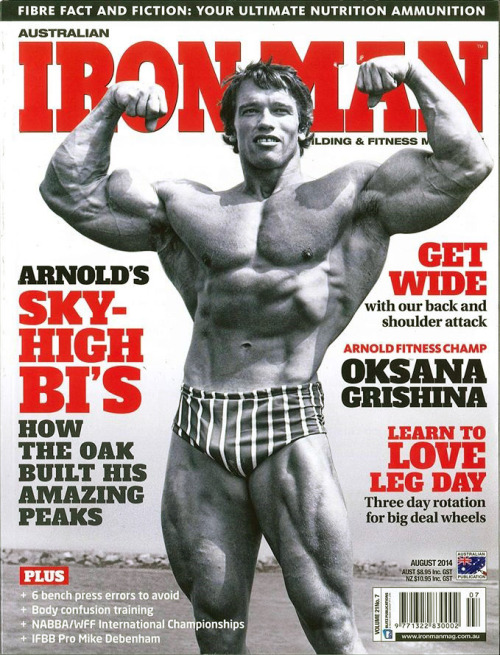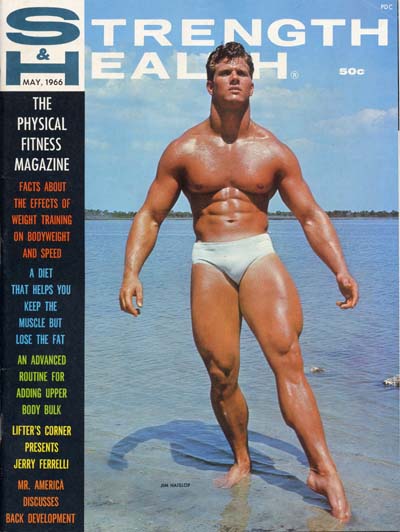John Meadows' Website:
John Meadows offers a monthly workout when you sign up and join him over at the website. Tons of info there, and tons times ten when you join, a huge amount of innovative training creations that come from years of bodybuilding experience. There's diet advice and plenty of video demonstrations as well.
Here's a sample Workout of the Month.
High Voltage Upper Body Workout
Note: this is only the written part of the monthly workout.
There's video to go with all of them.
Chest: - 2 exercises - 6 sets
Triceps - 2 exercises - 6 sets
Back - 4 exercises - 12 sets
Biceps - 1 exercise - 3 sets
Shoulders - 1 exercise - 3 sets
10 exercises - 30 sets.
Warm up - to add a little shoulder volume:
Superset Dumbbell Side Laterals and Front Raises with a light weight. Do 15 reps to the side and then immediately out front. Do 2 rounds.
Chest -
Banded Machine Press:
If you use a Hammer machine, I prefer the flat press. Be careful on any Hammer chest machine not to let our elbows go back past 90 degrees, as it is hard on the rotator cuff. Do a few warm up sets. Find a weight that you can do 8 reps and leave about 2-3 reps in the tank on each set. Take these to lockout and flex for one second. Do 3 sets of 8 like this. Use the only red pro mini bands.
Total Work Sets - 3
RPE (Rate of Perceived Exertion) - 8
Goal - Activation and start pump.
- If you don't understand RPE see here:
https://www.elitefts.com/education/training/rate-of-perceived-exertion-rpe/
Smith High Incline Press:
Use a weight that is going to allow you to have 2 to 3 reps left in the tank here. Do 3 sets. Don't lock these out. Take them to 3/4 lockout and then come right back down. These are awesome for delts and upper chest. They never beat my shoulders up either. Notice the angle and where the bar is traveling.
Totao Work Sets - 3
RPE - 8
Goal - Supramax pump.
Triceps -
Triceps Pushdown with Single Handles:
Go to failure on these. Do 3 sets of 15, where around 15 is failure.
Total Work Sets - 3
RPE - 10
Goal - Supramax pump.
Seated Overhead Rope Extensions:
Go to failure on these. Do 3 sets of 12, where around 12 is failure.
Total Work Sets - 3
RPE - 10
Goal - Supramax pump.
Back -
Single Arm Pulldown:
Do 3 sets of 10 here.
Total Work Sets - 3
RPE - 8
Goal Activation and start pump.
Low Cable Row:
I want you to crank hard on these with some heavy weight. It's okay to loosen form SLIGHTLY. Still leave 2-3 reps in the tank though. Do 3 sets of 10.
Total Work Sets - 3
RPE - 8
Goal - Train explosively.
Old School T-Bar Row:
Do 3 sets of 10 here. If you don't have a T-Bar, what I am looking for is for you to be using a neutral grip, so we continue to smash our lats. So use any machine that accomplishes that goal.
Total Work Sets - 3
RPE - 8
Goal - Supramax pump.
Hyperextensions:
Do 3 sets of 15-20 here preferably. I don't want failure.
Total Work Sets - 3
RPE - 8
Goal - Supramax pump.
Biceps:
Barbell Curls -
Go to failure on these. Do 3 sets of 10, flexing our bis as hard as you can throughout the movement.
Total Work Sets - 3
RPE - 10
Goal - Supramax pump.
Shoulders:
Rear Delt Raises -
Do 3 sets of 25 here. You can go to failure on these!
Total Work Sets - 3
RPE - 10
Goal - Supramax pump.
Triceps - 2 exercises - 6 sets
Back - 4 exercises - 12 sets
Biceps - 1 exercise - 3 sets
Shoulders - 1 exercise - 3 sets
10 exercises - 30 sets.
Warm up - to add a little shoulder volume:
Superset Dumbbell Side Laterals and Front Raises with a light weight. Do 15 reps to the side and then immediately out front. Do 2 rounds.
Chest -
Banded Machine Press:
If you use a Hammer machine, I prefer the flat press. Be careful on any Hammer chest machine not to let our elbows go back past 90 degrees, as it is hard on the rotator cuff. Do a few warm up sets. Find a weight that you can do 8 reps and leave about 2-3 reps in the tank on each set. Take these to lockout and flex for one second. Do 3 sets of 8 like this. Use the only red pro mini bands.
Total Work Sets - 3
RPE (Rate of Perceived Exertion) - 8
Goal - Activation and start pump.
- If you don't understand RPE see here:
https://www.elitefts.com/education/training/rate-of-perceived-exertion-rpe/
Smith High Incline Press:
Use a weight that is going to allow you to have 2 to 3 reps left in the tank here. Do 3 sets. Don't lock these out. Take them to 3/4 lockout and then come right back down. These are awesome for delts and upper chest. They never beat my shoulders up either. Notice the angle and where the bar is traveling.
Totao Work Sets - 3
RPE - 8
Goal - Supramax pump.
Triceps -
Triceps Pushdown with Single Handles:
Go to failure on these. Do 3 sets of 15, where around 15 is failure.
Total Work Sets - 3
RPE - 10
Goal - Supramax pump.
Seated Overhead Rope Extensions:
Go to failure on these. Do 3 sets of 12, where around 12 is failure.
Total Work Sets - 3
RPE - 10
Goal - Supramax pump.
Back -
Single Arm Pulldown:
Do 3 sets of 10 here.
Total Work Sets - 3
RPE - 8
Goal Activation and start pump.
Low Cable Row:
I want you to crank hard on these with some heavy weight. It's okay to loosen form SLIGHTLY. Still leave 2-3 reps in the tank though. Do 3 sets of 10.
Total Work Sets - 3
RPE - 8
Goal - Train explosively.
Old School T-Bar Row:
Do 3 sets of 10 here. If you don't have a T-Bar, what I am looking for is for you to be using a neutral grip, so we continue to smash our lats. So use any machine that accomplishes that goal.
Total Work Sets - 3
RPE - 8
Goal - Supramax pump.
Hyperextensions:
Do 3 sets of 15-20 here preferably. I don't want failure.
Total Work Sets - 3
RPE - 8
Goal - Supramax pump.
Biceps:
Barbell Curls -
Go to failure on these. Do 3 sets of 10, flexing our bis as hard as you can throughout the movement.
Total Work Sets - 3
RPE - 10
Goal - Supramax pump.
Shoulders:
Rear Delt Raises -
Do 3 sets of 25 here. You can go to failure on these!
Total Work Sets - 3
RPE - 10
Goal - Supramax pump.












